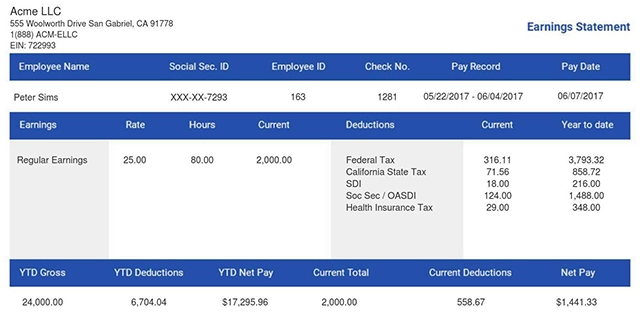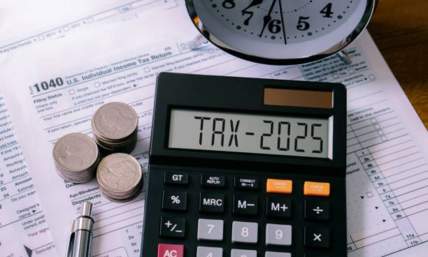How to Estimate Tax Return With Last Pay Stub: A Complete Walkthrough
Today's business environment is fast-paced and competitive. And when it comes to finances, you don’t want to be left behind. Many taxpayers want an idea of their likely refund even before receiving their W-2 forms. Generally, a pay stub is not as accurate as your W-2 for filing your tax return. However, your last pay stub of the year can help calculate your estimated return.
In this guide, you’ll learn how to estimate tax return with last pay stub. With this knowledge, you can better plan your finances.
What Is Tax Return Estimation?
There’s a time of the year that many are both looking forward to and dreading. It’s called tax season. Estimating your tax return helps you manage your expectations and act accordingly. With your last pay stub, you can determine your possible tax return. While this is not an exact figure, it helps in making a reasonable estimation. It also prepares you for the calculations to be made during the next tax year. Accordingly, you should know how to calculate tax return from pay stub.
What Is on Your Last Pay Stub?
Your final pay stub of the year serves as a comprehensive summary of your annual earnings and deductions. It holds details of the gross pay, taxes paid, and other deductions. These are components that affect your actual return. For instance, the year-to-date (YTD) figures on your last pay stub are very important. They capture all the financial activities within the fiscal year.
To determine your estimated taxes for the tax return, you will need to consider some aspects of the pay stub. Gross income is your total income before any deductions or reductions have been made. Tax withholdings represent the amount of taxes paid throughout the year. This includes the federal and state levels. Employer and employee Social Security and Medicare taxes are another important component. They are also called FICA taxes. There are some other voluntary contributions, such as health insurance premiums. Retirement contributions and flexible spending account deductions also form part of this. All of these affect your taxable income.
How to Estimate Your Tax Return With Last Pay Stub
There are several steps on how to estimate tax return with last pay stub. You need to follow them with diligence and accuracy:
Income
First, you need to estimate the total gross income per year. That is available in the YTD section on the pay stub. This figure becomes the basis for all calculations. Next, from this figure, you will deduct the necessary pre-tax deductions. This takes you to the amount that’s your taxable income.
Deductions
Pre-tax deductions are taken out of the gross income before tax. Common examples include contributions to retirement plans such as 401(k). Health insurance deductions and deductions towards FSAs are other types. Now, you need to calculate your Adjusted Gross Income (AGI). This is what you get after subtracting these deductions from your gross income.
Filing Status
Filing status is important as it defines the taxation status of the filer. An example is whether you are filing as single or married and filing jointly. Your status will determine the tax brackets and standard deduction amount. The standard deduction further reduces your taxable income for the year. However, this applies only if you do not plan to itemize deductions.
Other Factors Affecting Your Return
Generally, you should know how to estimate tax return with last pay stub. However, several other elements affect your actual refund.
Many people are unaware of the difference between a tax credit and a tax deduction. Tax credits include the Child Tax Credit, Earned Income Tax Credit, and education credits. They differ from tax deductions and deductibles. Credits reduce your tax liability dollar for dollar. Your pay stub may not display the details of these credits. However, they should be considered if you qualify for them.
Other sources of income also affect your tax return estimation. You may have other sources of cash flow, such as side gigs or investment income. These may not reflect on the pay stub. You should add these amounts to your calculations. Similarly, you need to consider this if you have multiple jobs. Add the information from all your pay stubs to get the right estimate.
State and local taxes also bring added issues. Taxes and their rates vary from one state to another. This has a significant impact on your general taxation picture. Your last pay stub may show state and local tax withholding. However, you will need to check whether such withholdings align with your tax liability in these states.
Special Circumstances and Adjustments
The nature of a person’s life during the financial year can affect their expected tax return. Changes such as marriage, divorce, and having or adopting children affect your taxes in some way. The same happens if you purchase a house or start a business. Your last pay stub may not directly show these changes. But they should still be considered.
Common Errors To Watch For
There are several pitfalls that people face while trying to estimate their taxes from pay stubs. They happen even if you know how to estimate tax return with last pay stub. A common mistake is ignoring year-end adjustments that do not reflect on regular pay stubs. Things like bonuses, commission payments, or changes in benefits can always influence your tax liability. Moreover, some people do not know the impact of pre-tax and post-tax deductions.
Other issues include misunderstanding tax bracket thresholds. Tax brackets are progressive. This means different portions of your income are taxed at different rates. You cannot apply only the highest tax bracket percentage to all taxable income. This will lead to an overestimation of the tax you’re liable to pay.
In Closing
Generally, it is possible to know how to estimate tax return with last pay stub. This helps you gain valuable information for financial planning while waiting for your W-2. This method is not foolproof. However, understanding the approach and all related elements can serve as a guideline. This helps you make better financial decisions. All calculations should be checked again when you get the official tax documents. Always employ the services of tax experts when necessary.
Estimating your tax return with your last pay stub is a smart financial move. Having an accurate and professional pay stub is an even smarter one. With our professional pay stub generator, you can easily generate detailed pay stubs. These documents will reflect your income and deductions accurately. We help you stay on top of your finances and prepare you for tax season. Check it out today and simplify your payroll documentation for a smoother tax return process.















